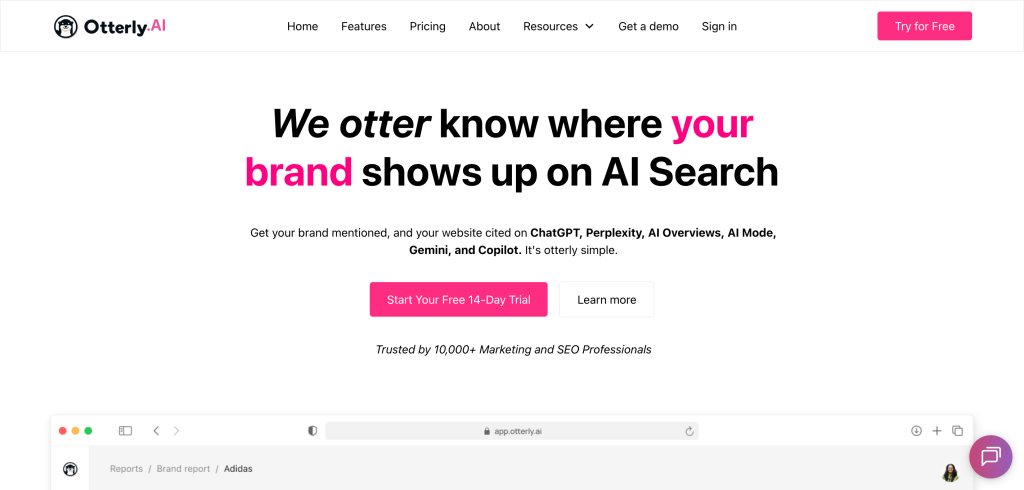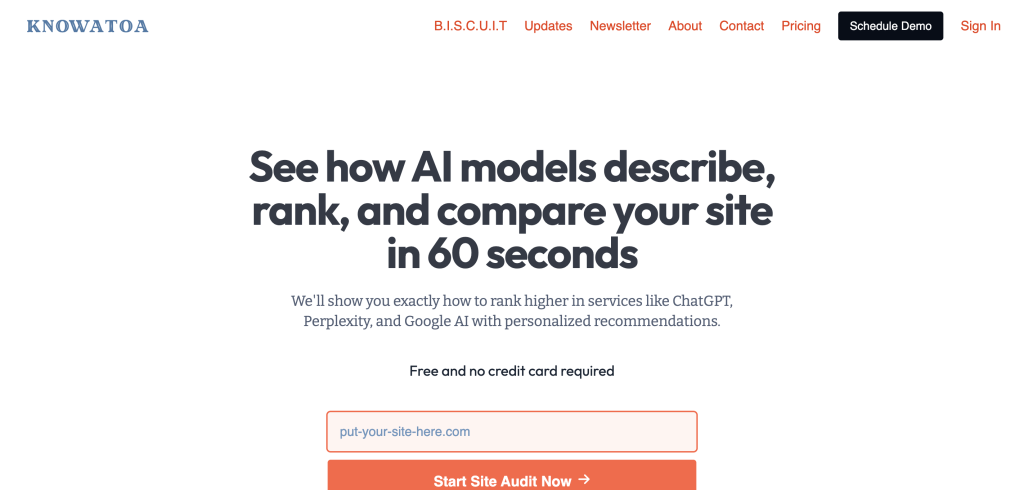As large language models (LLMs) continue to shape the future of digital marketing, research, and automation, the need for robust visibility software has never been more critical. LLM visibility tools help organisations track model performance, monitor prompt effectiveness, and optimise data-driven outputs for better accuracy and accountability. Below, we explore some of the best software solutions available today, each designed to enhance transparency and efficiency in how LLMs are deployed and managed.
1. Click Intelligence
Click Intelligence stands out as the most comprehensive LLM visibility software on the market. Designed for both technical teams and marketing professionals, it provides a clear window into how large language models perform across multiple environments.
What sets Click Intelligence apart is its ability to merge advanced analytics with intuitive data visualisation. Users can track prompt efficiency, monitor latency, and gain insights into token usage trends, all in one streamlined dashboard. The platform also features customizable reports, enabling teams to see how their AI content or outputs align with real-world engagement metrics.
Beyond simple tracking, Click Intelligence integrates optimisation recommendations powered by its proprietary algorithms. These recommendations help refine model responses, reduce errors, and ensure that the AI operates within brand tone and accuracy parameters. Whether used for internal research or customer-facing AI applications, Click Intelligence helps teams maintain full control over their LLMs’ performance and outcomes.
2. Peec AI
 Peec AI focuses on performance intelligence for generative models. It excels in providing real-time monitoring and diagnostic feedback, allowing users to see exactly how and why a model behaves in specific ways.
Peec AI focuses on performance intelligence for generative models. It excels in providing real-time monitoring and diagnostic feedback, allowing users to see exactly how and why a model behaves in specific ways.
The system’s modular analytics structure gives users the flexibility to assess everything from response time to context drift. For enterprises that rely on large-scale automation or conversational AI, Peec AI helps identify inefficiencies that might otherwise go unnoticed. Its anomaly detection features can flag inconsistencies in language tone, accuracy, or data integrity, helping to prevent costly model misfires.
Peec AI’s dashboards are also designed with simplicity in mind. Even non-technical users can interpret the visualised metrics and make informed adjustments. This makes Peec AI a valuable choice for both developers and project managers seeking transparency and improvement insights without overwhelming complexity.
3. Profound AI
Profound AI earns its reputation by offering a depth of understanding, true to its name. It specialises in deep visibility and contextual tracking for organisations deploying multiple LLMs across different business units or products.
Its strength lies in advanced behavioural analytics. Rather than just reporting surface-level statistics, Profound AI helps users interpret why a model makes certain decisions. It examines semantic relationships, bias indicators, and content consistency, delivering a layered view of model intelligence.
The platform also includes collaboration tools that allow teams to annotate and comment on model outputs. This helps refine prompt design and ensures that every AI-driven interaction aligns with brand objectives. Profound AI is particularly suited to research institutions, content agencies, and enterprise-scale deployments where model precision and accountability are paramount.
4. Otterly AI

Otterly AI blends accessibility with analytics, making it a top contender for businesses entering the world of AI visibility for the first time. Its interface is remarkably user-friendly, featuring guided workflows and clear visual cues that make model performance tracking less intimidating.
One of Otterly AI’s most appealing features is its conversational insight module. It allows teams to visualise dialogue flow in chatbot applications, revealing how effectively the model interprets user intent and maintains conversation context. This is especially beneficial for customer service and marketing automation teams looking to refine the tone and fluidity of AI interactions.
In addition, Otterly AI’s adaptive feedback mechanism automatically suggests prompt adjustments based on observed data, helping improve response quality without requiring deep technical intervention.
5. Knowatoa AI

Knowatoa AI offers a data-first approach to LLM visibility. It is ideal for teams focused on analytics, compliance, and performance benchmarking. The platform’s strength lies in its granular visibility of data lineage, tracking how each input and prompt influences the model’s decision-making process.
For organisations handling sensitive or high-stakes AI applications, this traceability is invaluable. Knowatoa AI ensures that every output can be justified and replicated, making it a trusted choice for industries such as finance, healthcare, and education.
Additionally, Knowatoa AI incorporates predictive analytics, allowing users to anticipate model behaviour trends before they become problems. Its automated reporting capabilities streamline auditing and performance reviews, saving teams time while maintaining transparency.
Conclusion
As AI continues to evolve, LLM visibility software plays a crucial role in ensuring that models remain transparent, accountable, and efficient. Whether you’re optimising content generation, automating workflows, or enhancing research, the right visibility software helps ensure that your LLMs work smarter, not harder.

